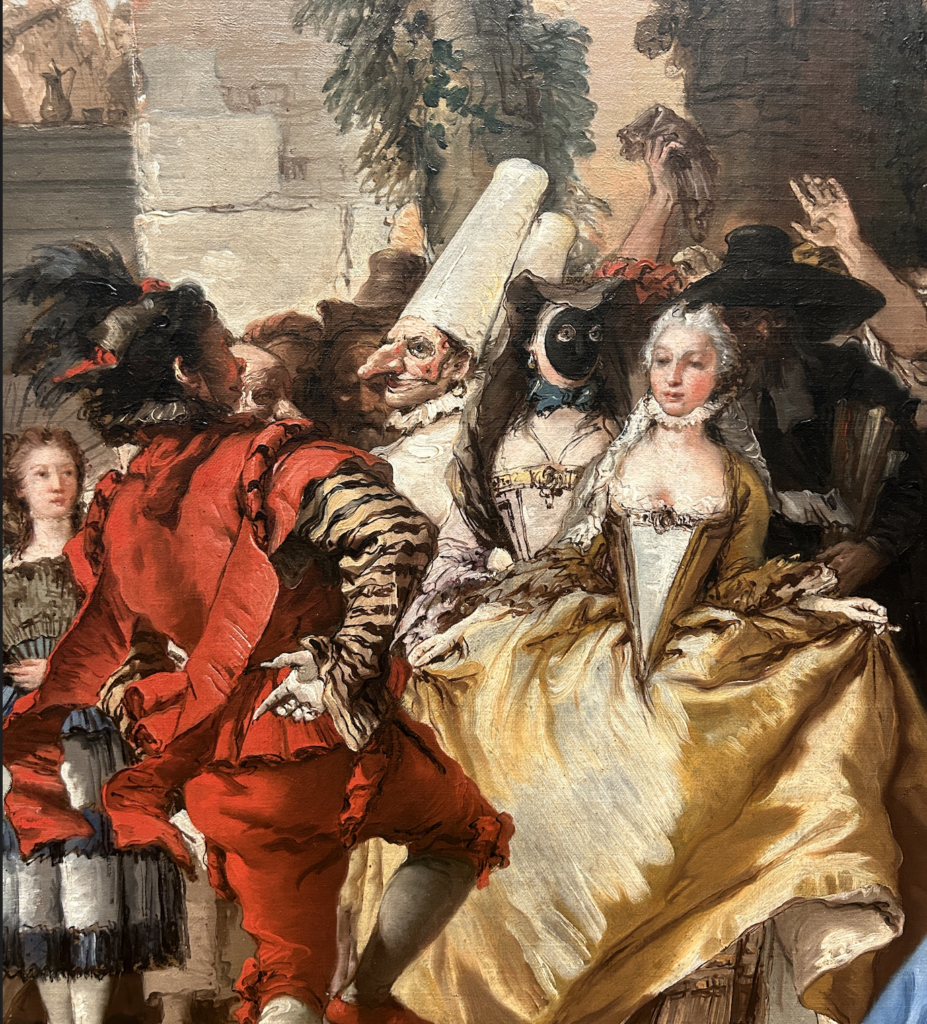Room 817 – Degas, Manet, Toulouse-Lautrec, Impressionist Wing
Rating: 8.6/10
Let me get this out of the way quickly: I both greatly enjoy and absolutely adore Henri de Toulouse-Lautrec. I enjoy him for his art and strange story, but I adore him on account of one single, solitary painting housed at the Philadelphia Museum of Art: At the Moulin Rouge, The Dance. It’s big, it’s weird, it’s colorful in a decidedly absinthy way, and it used to hang behind the bar at the actual Moulin Rouge. You can get lost imagining the residual cigarette smoke that cakes its canvas and the eminent lungs through which said smoke would have passed before making its way to the dried oils of The Dance. But we’re at The Met, so I’m compelled to talk about the Toulouse-Lautrecs here. Nothing compares, but alas.
HTL does not get nearly enough credit for his modernity. Sure, Monet invented every girl’s favorite painting genre, and Cézanne was the flashier envelope-pusher, but let’s root for the underdog for a second. The, wide-open, unfinished feeling to his canvases — like he was rushing them off the press to settle a critical gambling debt, or pay for an overdue tab at a nearby bistro — is palpable, and yet each painting manages to feel whole. His women are always striking but almost never beautiful; his men of strange shapes, sizes and contortions, beating Schiele to the punch. The eyes of his figures are always some concoction of mischief and malice, disgust for the world and an impatience to imbibe it. Perhaps these were the eyes of HTL himself, or maybe they were the eyes he saw in passersby, the tragically small and strange man that he was.
Manet is my least favorite of the three artists in this room by far. Outing myself as a dilettante here, but the work is a yawn. (His stuff at the PMA, again, is better.) There are strokes of brilliance, but his canvases are something like a deep fried meme to me. Does he have his spectacular images? Yes. Do I leap for joy when I see his unmistakeable compositional style in a room? Firmly not. But is there any better marker of a true voice than to say that you definitively know a Manet when you see one? Perhaps there’s more to learn.
Degas, I confess to have been deeply wrong about. My friend Belinda once told me her favorite painting in the museum was a Degas. Feeling playful on what was undoubtedly a solo Saturday visit, I asked her to allow me to indulge me in a guessing game. Three chances to find it. There are, for the record, what seem like hundreds here.
Well, this little game was an exercise I will forever cherish, because it forced me to take a closer look at what I considered to be a one-note painter. Degas? He’s the ballerina guy. The pink and beige pastel man. Over and over, like an obsessive compulsive with a worn-down paintbrush. Boy was I wrong. Looking for Belinda’s favorite, I found a whole new Degas: colors I had never expected to find and therefore been blind to; subjects I had never believed Degas had it in him to depict. Yes, here was the female form again and again (and again), but never truly the same. Here was a bather, wow! A dash of blues and greens and purples! Degas wasn’t a one-trick pony! He had two, even three-tricks! Her favorite, for reference, was a darkened stage scene. She said it reminded her of Powell & Pressburger’s The Red Shoes. I did not guess it right in my first three guesses, but I got it right in overtime.
I quite like Degas now, he holds nearly the same weight as HLT and the pairing of the two is obvious but still inspired. Both were strange men. Both overlooked and misunderstood, either by me, by their contemporaries, or both. Manet, I’ll keep the door slightly ajar for. As for Degas being Jack the Ripper, I doubt it. But then again, I was wrong about him once…
